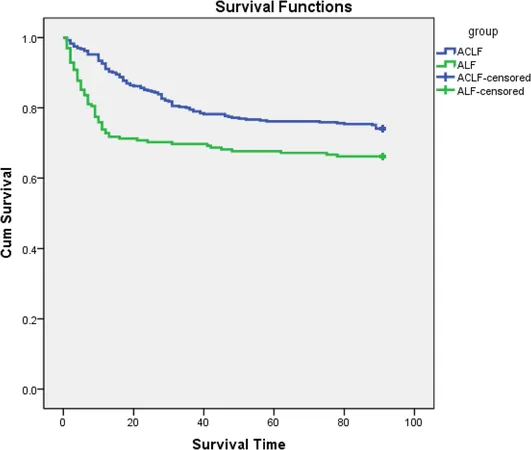
The Life-and-Death Battle: Acute vs. Acute-on-Chronic Liver Failure in Beijing
2025-09-03
Author: Li
Understanding the Study
A groundbreaking study conducted at Beijing Ditan Hospital, covering a 13-year span from June 2009 to May 2022, scrutinizes the outcomes of patients battling acute liver failure (ALF) versus those suffering from acute-on-chronic liver failure (ACLF). This research involved an extensive retrospective review involving 585 patients, and aimed to shed light on the dire prognosis associated with these critical conditions.
Who Was Studied?
The study included adults aged 18 and above who were diagnosed with either ALF or ACLF while excluding those with liver cancer, incomplete records, short hospital stays, or multiple admissions. The result? A cohort consisting of 195 ALF patients and 390 with ACLF, predominantly male and averaging around 51 years of age.
Defining the Illnesses
ALF typically involves sudden liver failure leading to coagulopathy—also known as bleeding disorders—while ACLF involves a complex interplay of acute liver conditions arising in patients with existing chronic liver disease. The study thoroughly outlines the diagnostic criteria and definitions integral to understanding these conditions.
Data and Mortality Rates
Key data collected included demographic information, diagnoses of multi-organ dysfunction syndrome (MODS), hospitalization details, and follow-up mortality rates. Shockingly, ALF patients exhibited a substantially higher 90-day mortality rate—33.8%, compared to ACLF patients at 25.9%.
Risk Factors Galore
Assessment of risk factors revealed that complications such as age, bilirubin levels, and the number of failing organs significantly influenced mortality. Intriguingly, ALF patients tended to face more severe admission scores and developed MODS more frequently than their ACLF counterparts.
The Underlying Causes
The findings pointed to drug-induced liver injury and hepatitis B infection as major culprits behind ALF, while ACLF was primarily associated with hepatitis B and alcohol-related liver damage. Given the vast prevalence of hepatitis B in China, impacting nearly 100 million people, these results underline a significant public health concern.
The Dynamics of Mortality
This research draws attention to the stark contrast in survival rates driven by the degree of liver damage and inflammation. Increased mortality rates were observed particularly among ALF patients, who faced severe organ dysfunction and high incidences of infections.
The Bigger Picture
This detailed investigation not only provides critical insights into liver failure management but also emphasizes the pressing need for early diagnosis and specialized care to improve outcomes. As liver failure remains a complex and dynamic battlefield, understanding these multifaceted interactions could ultimately lead to better patient survival.


 Brasil (PT)
Brasil (PT)
 Canada (EN)
Canada (EN)
 Chile (ES)
Chile (ES)
 Česko (CS)
Česko (CS)
 대한민국 (KO)
대한민국 (KO)
 España (ES)
España (ES)
 France (FR)
France (FR)
 Hong Kong (EN)
Hong Kong (EN)
 Italia (IT)
Italia (IT)
 日本 (JA)
日本 (JA)
 Magyarország (HU)
Magyarország (HU)
 Norge (NO)
Norge (NO)
 Polska (PL)
Polska (PL)
 Schweiz (DE)
Schweiz (DE)
 Singapore (EN)
Singapore (EN)
 Sverige (SV)
Sverige (SV)
 Suomi (FI)
Suomi (FI)
 Türkiye (TR)
Türkiye (TR)
 الإمارات العربية المتحدة (AR)
الإمارات العربية المتحدة (AR)